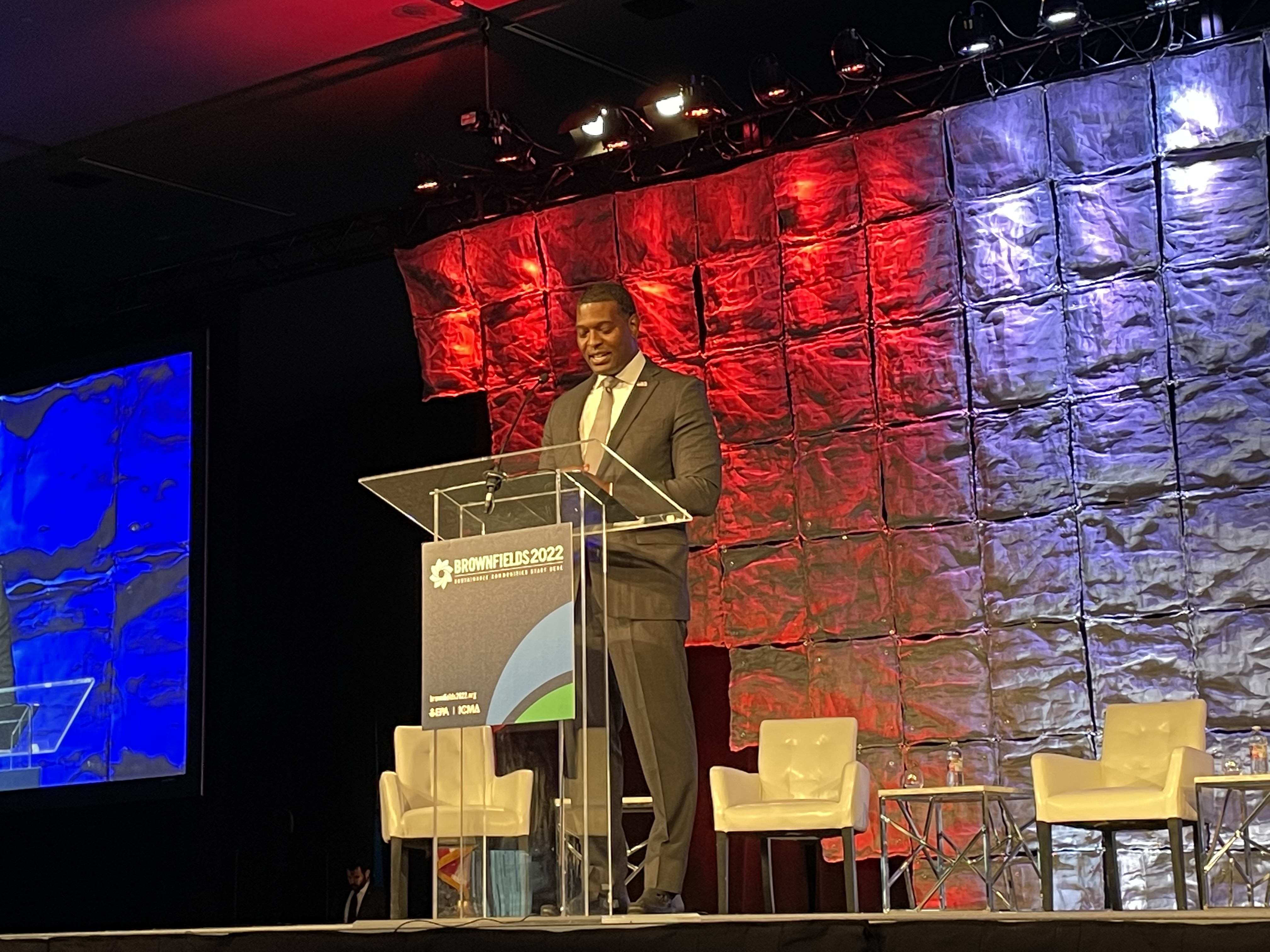
The recently concluded National Brownfields Conference in Oklahoma City attracted more than 2,100 registrants and featured 130 educational sessions. The conference is a partnership between ICMA and the U.S. Environmental Protection Agency and one of ICMA’s longest-running grant-funded programs.
From keynote speakers to whispers in hallway meetings, a key topic of presentation and conversation was the timing of EPA’s FY 2023 brownfields funding. The Infrastructure Investment and Jobs Act (IIJA), which is now more commonly referred to as the Bipartisan Infrastructure Law (BIL), authorized more than $1.5 billion dollars over the next five years in new federal funding to help communities assess and cleanup formerly used commercial and industrial properties and spark redevelopment of single sites, neighborhoods, and larger regions. In September 2022, it was announced that various competitive funding programs for FY 2023 are now available for local governments to consider in support of their revitalization activities. Each of the opportunities is summarized below and more detail can be found on EPA’s brownfield grants website. The total amount available through the solicitations listed below is more than $130 million.
- Multipurpose Grants are for communities that have identified, through community engagement efforts, a discrete area (such as a neighborhood, a number of neighboring towns, a district, a corridor, a shared planning area, or a census tract) with one or more brownfield sites. Multipurpose Grants provide funding to carry out a range of eligible assessment and cleanup activities, including planning and additional community engagement activities. Applicants can apply for funding up to $800,000 per grant under this solicitation. The total funding available for the FY 2023 Multipurpose Grants program is $14,000,000.
- Community-wide Assessment Grants. Grants are appropriate for communities that are beginning to address their brownfield challenges, as well as for communities that have ongoing efforts to bring sites into productive reuse. Applicants may request funding up to $500,000. The total funding available for the FY 2023 Community-wide Assessment program is $30,500,000.
- Assessment Coalition Grants are designed for one “lead” eligible entity to partner with two-to-four eligible entities that do not have the capacity to apply for and manage their own EPA cooperative agreement and otherwise would not have access to brownfields grant resources. Award amounts of up to $1,000,000 are possible. The total funding available for the FY 2023 Assessment Coalition program is $20,000,000.
- Revolving Loan Fund Grants provide loans and subgrants to eligible entities to carry out cleanup activities at brownfield sites contaminated with hazardous substances and/or petroleum. The maximum funding request is up to $1,000,000. The total funding available for the FY 2023 RLF program is $10,000,000.
- Cleanup Grants provide funding to carry out cleanup activities at brownfield sites owned by the applicant, such as a local government or nonprofit organization. Funding amounts have different requirements but can range from $500,000 to $2,000,000. The total funding available for the FY 2023 Cleanup Grants program is $60,000,000.
Each of the programs have different guidelines and eligibility requirements, so local governments and their partners are encouraged to review each solicitation. Check out www.grants.gov, the federal government’s primary listing service for funding programs like the new brownfields grants.
EPA has also organized several upcoming webinars for local governments and other potential grantees to learn more about the newly announced programs. Registration procedures and times for each webinar, the first of which is scheduled for September 29, 2022, are listed on EPA’s brownfield funding website.
For individuals who need help in considering which program is appropriate for them, EPA has long-funded several technical assistance for brownfields (TAB) providers that stand ready to provide help needed. Each of EPA’s 10 regions has a different providing organization.
ICMA is the new TAB provider for EPA Region 4 covering the states of Kentucky, Tennessee, North Carolina, South Carolina, Georgia, Florida, Alabama, and Mississippi. Other providers and the states they cover are listed below. In addition to helping individuals prepare for EPA grants, the ICMA TAB team can help plan, engage stakeholders, and grow one's capacity to catalyze brownfield redevelopment.
The federal brownfields program has been around for more than two decades but has never seen funding levels like those that are now available and those that will come online in the future as a result of the BIL.Whether a community has a single property or many sites, federal brownfield’s funding is available, along with free technical assistance.
TAB Provider |
Service Areas |
Contact |
|---|---|---|
| University of Connecticut | Connecticut, Maine, Massachusetts, New Hampshire, Rhode Island, Vermont | uconn-tab@uconn.edu |
| New Jersey Institute of Technology | New York, New Jersey, Puerto Rico, U.S Virgin Islands | tab@njit.edu |
| West Virginia University | Delaware, Maryland, Pennsylvania, Virginia, West Virginia, District of Columbia | wvutab@mail.wvu.edu |
| ICMA | Kentucky, Tennessee, North Carolina, South Carolina, Alabama, Mississippi, Georgia, Florida | chenry@icma.org |
| Kansas State University | Illinois, Indiana, Michigan, Minnesota, Ohio, Wisconsin, Texas, New Mexico, Oklahoma, Arkansas, Louisiana, Iowa, Kansas, Missouri, Nebraska, Colorado, Montana, North Dakota, South Dakota, Utah, Wyoming (and 27 tribal nations) | chsr@k-state.edu |
| Center for Creative Land Recycling | Arizona, California, Hawai’i, Nevada, the Pacific Islands, Washington, Idaho, Oregon, Alaska | info@cclr.org |
New, Reduced Membership Dues
A new, reduced dues rate is available for CAOs/ACAOs, along with additional discounts for those in smaller communities, has been implemented. Learn more and be sure to join or renew today!
